We are in Varanasi, the spiritual capital of India—a city where Hindu rituals are not only celebrated during its famous festivals but throughout all 365 days of the year. One such example is the Ganga Aarti, a religious rite that takes place every evening at dusk at the Dashashwamedh Ghat.
The ghats are the steps that line the city, connecting its streets with the sacred Ganges River, also known as the Ganga. This river “flows and flows” for over 2,500 kilometers, from the border with China to the coast of Bangladesh.
The Ganges is one of the seven sacred rivers of Hinduism, where devotees come to purify themselves, and where funeral rituals are performed. Dying in the Ganges River is believed to help one reach the end of the cycle of reincarnation and attain moksha (liberation).
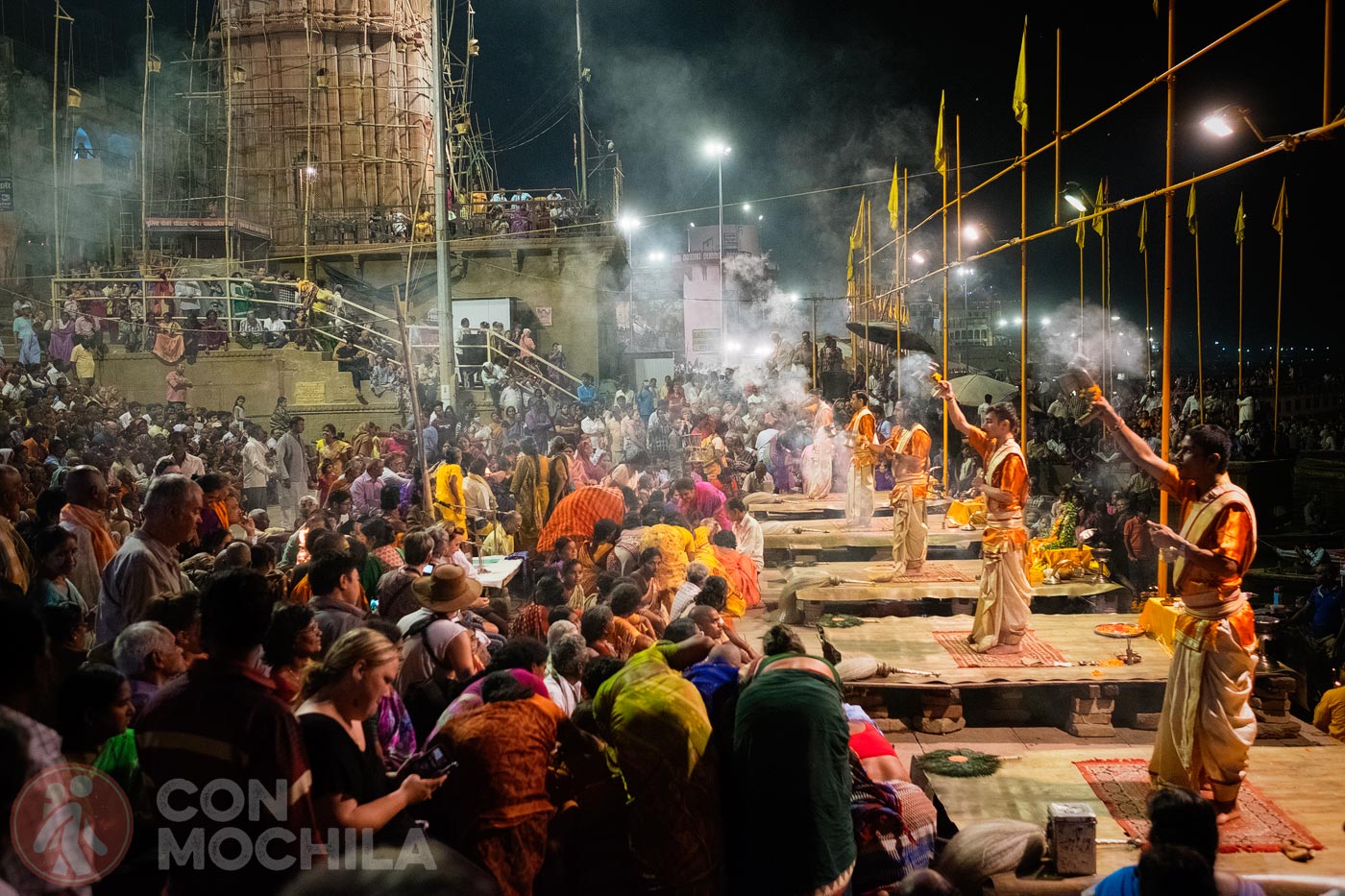
At one of these steps, the Dashashwamedh Ghat, one of the city’s most renowned rituals takes place, drawing the attention not only of Hindus but also of travelers eager to learn about Hindu culture and witness a visually captivating spectacle.
The Ganga Aarti is a ritual offering to the Ganges River and involves all the necessary elements for the puja (offering) to be complete and for devotees to achieve purification.
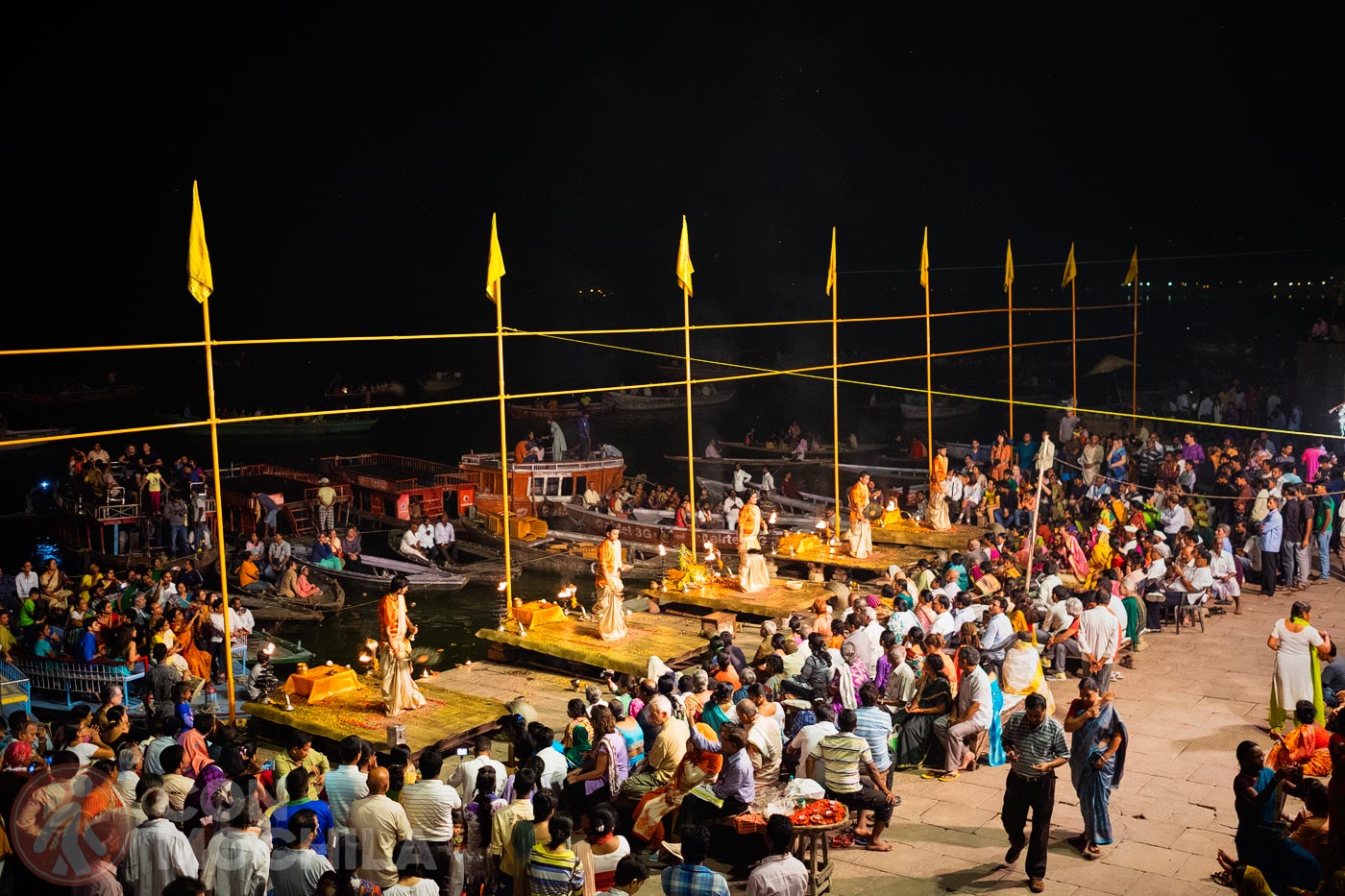
Young Brahmin priests, dressed in satin robes, begin the ritual by synchronizing their movements with the four elements essential to the ceremony: the earth, symbolized by flowers; the river’s water; fire, represented by candles and oil lamps; and air, infused with the smoke and fragrance of incense.
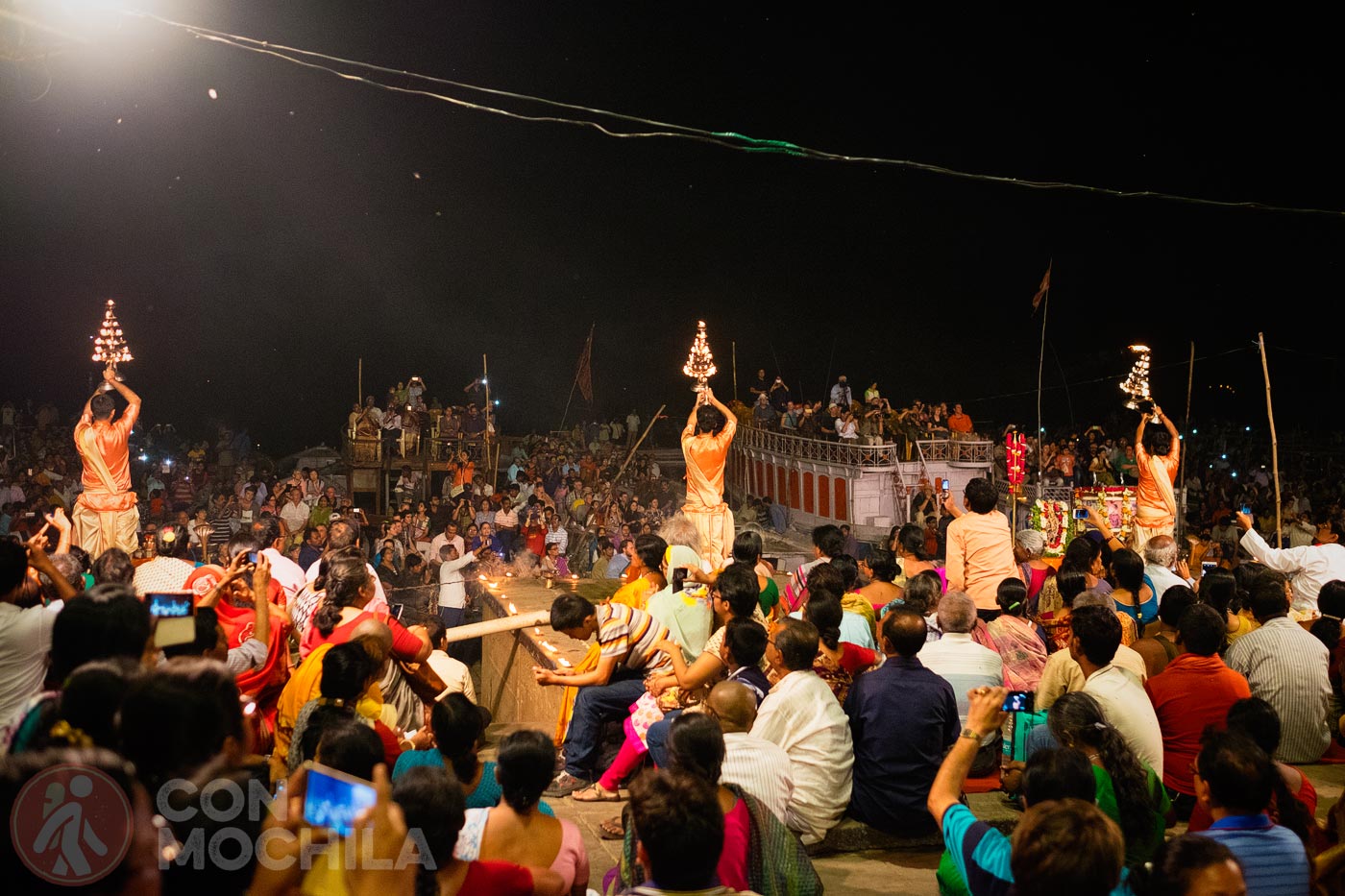
Accompanying the ritual are songs, dancing, and lights, all aimed at deepening the religious experience.
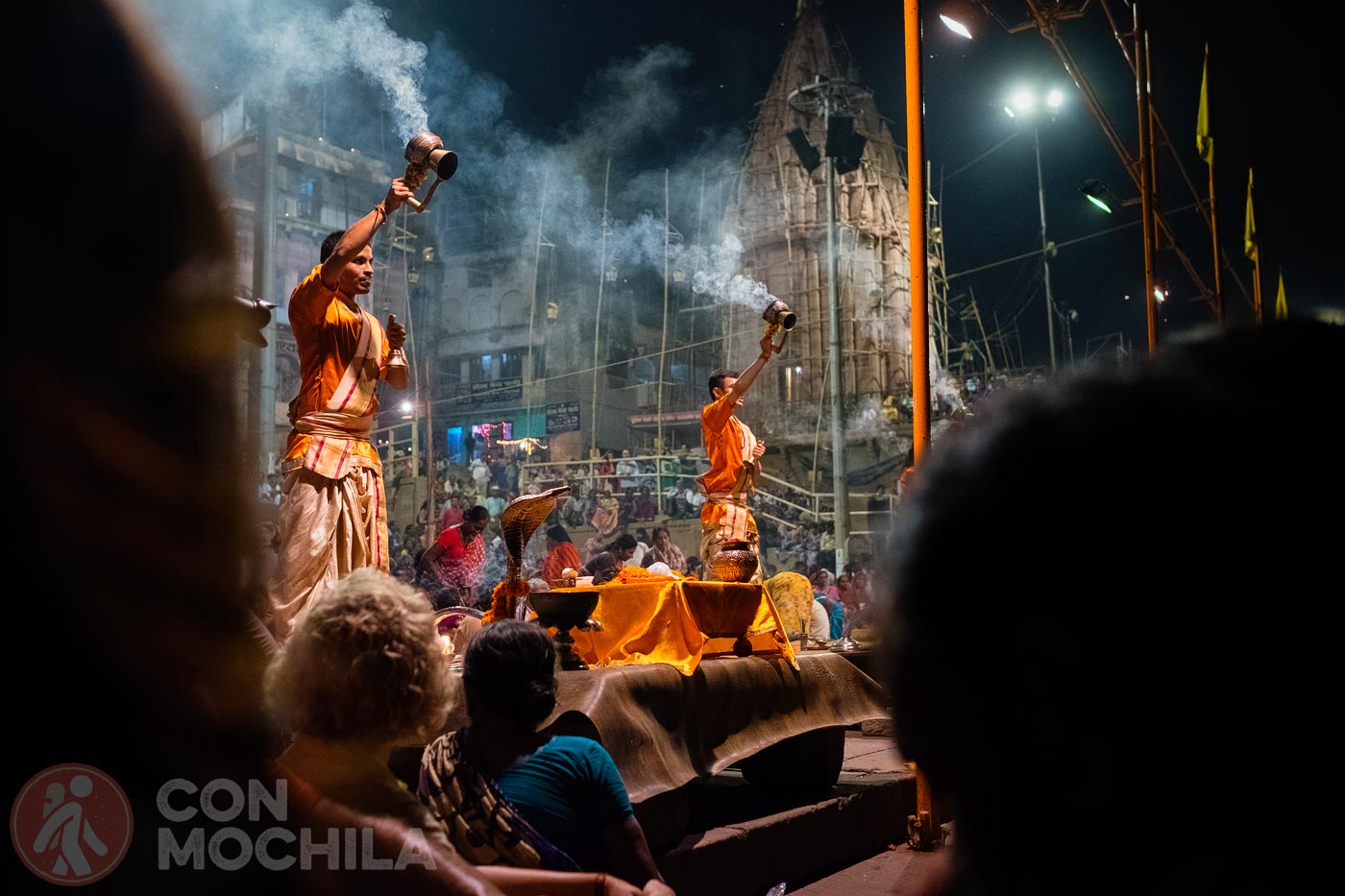
At the end of the ceremony, these elements are offered to the deity, with the contents of the offering plates being poured into the river. In addition to the priests’ offerings, the people’s contributions—flowers, candles, or small lamps—are set afloat on the Ganges. If you wish to participate, you can easily buy flowers or candles from street vendors nearby.
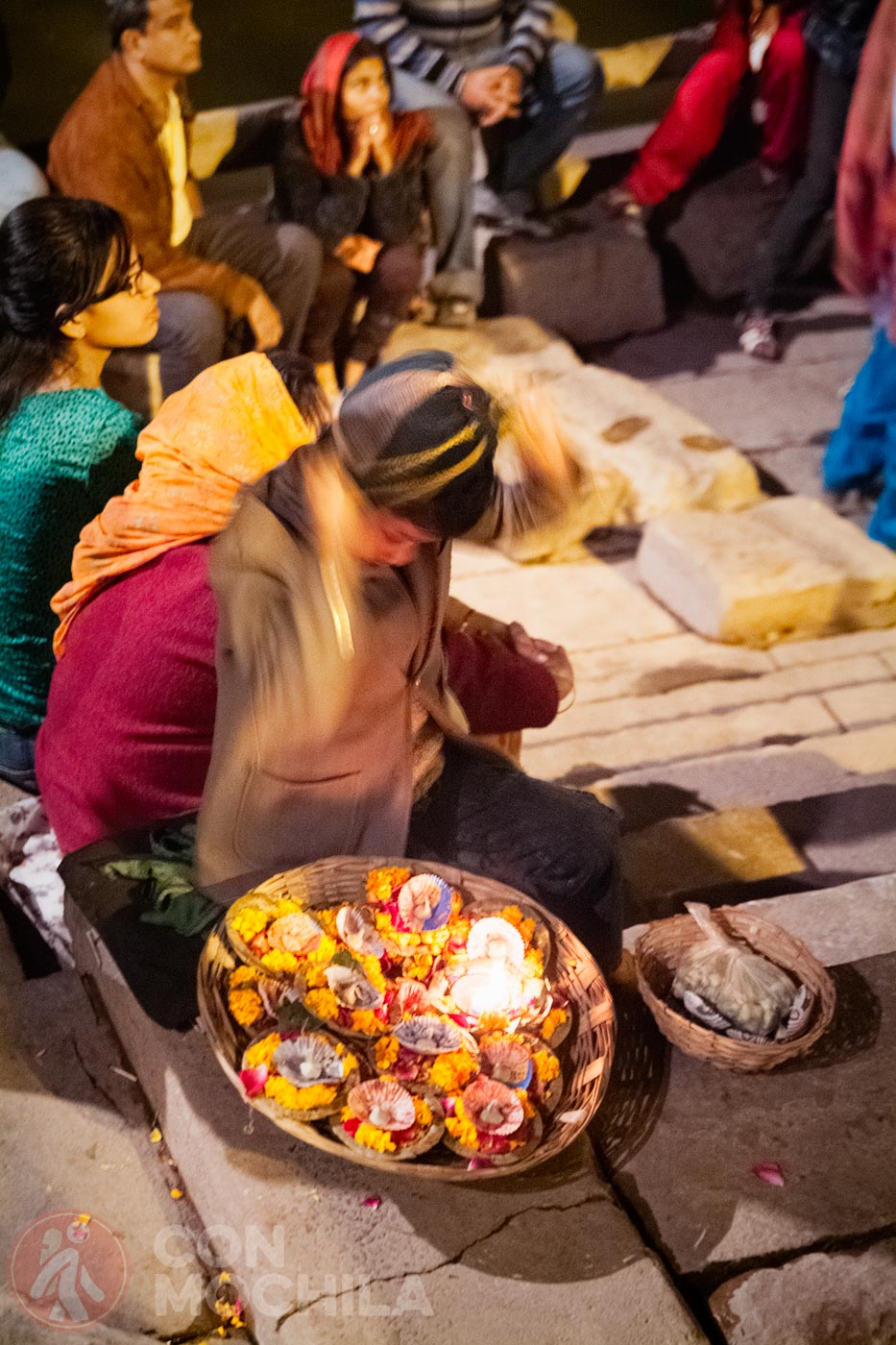
To reach Dashashwamedh Ghat, you can either walk through the city or hire a rickshaw (a tuk-tuk), depending on how far you are. For example, expect a 30-minute walk from the Durga Temple.
The ritual begins at dusk, so if you want a good spot to watch comfortably, arrive no later than 5:30 p.m., considering that the ceremony during summer starts just before 7 p.m. Another popular way to experience the Aarti is from the river, either by renting a private boat or boarding one of the tourist boats, which have reserved spots in the front row every evening.
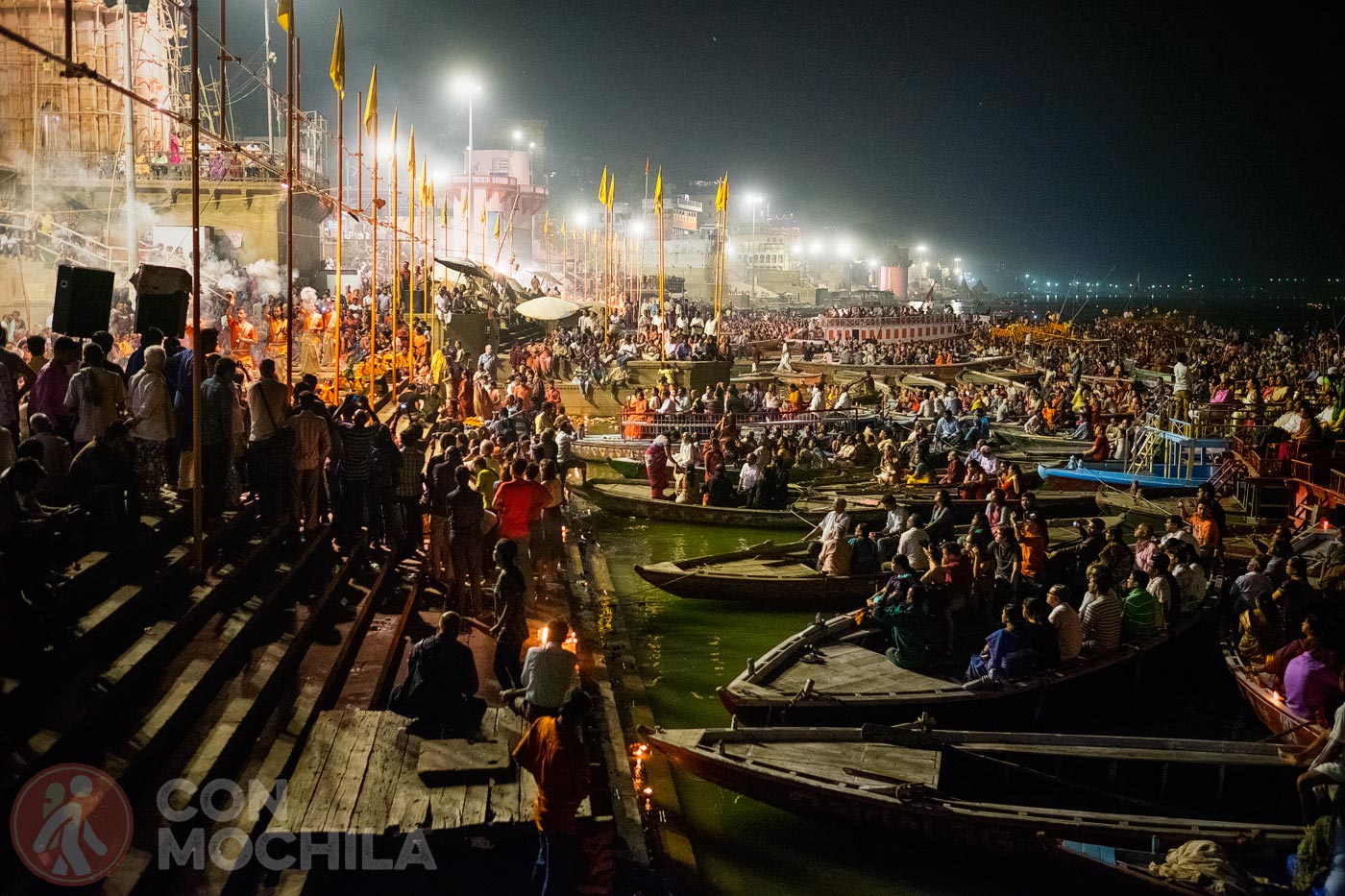
Choose your seat wherever you prefer, and immerse yourself in Hindu spirituality, as our friend Nando Baba did.
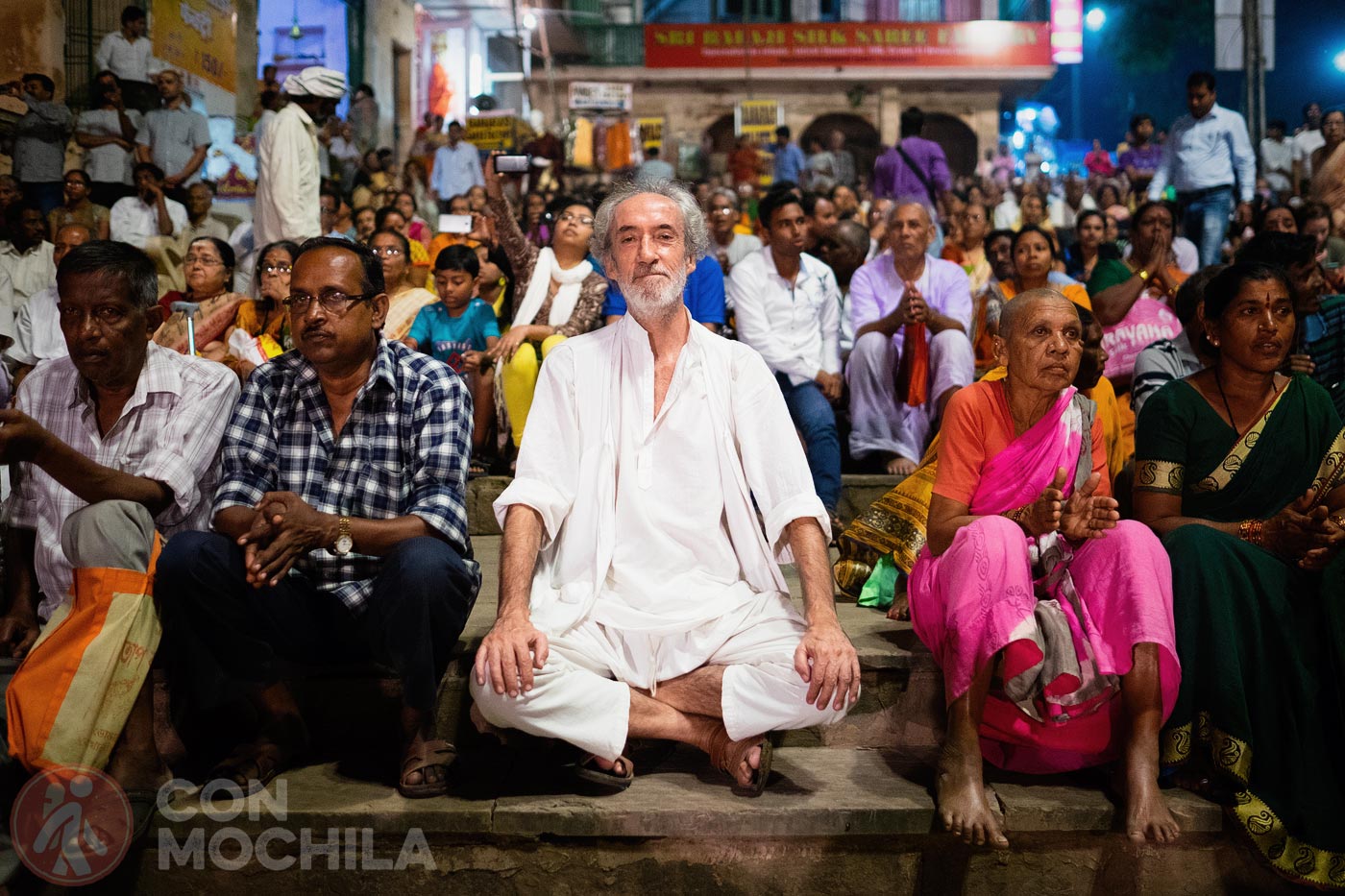
If you want to see the Ganga Aarti, explore the ghats, and discover other attractions in Varanasi, you can always book a city tour. Here are some interesting options:
ACTIVE CAMPAIGN !
Until december 1st, you can get an automatic 15% discount on your Heymondo travel insurance.